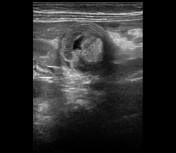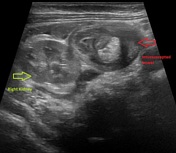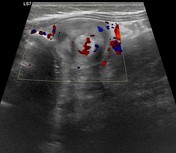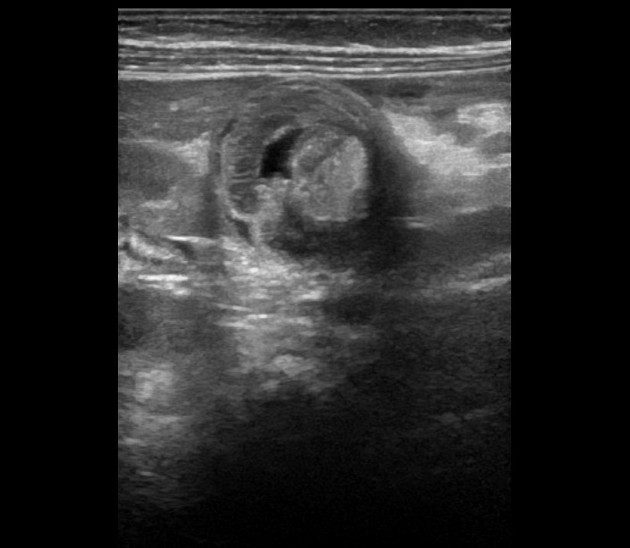Presentation
Acute lower gastrointestinal bleed. Vague palpable mass on abdominal examination.
Patient Data

A mass of intussuscepted bowel is seen in the upper abdomen. The intussusception extends from the cecum to the left splenic flexure.
It appears as a reniform shape (pseudokidney sign) longitudinally and demonstrates multilayered concentric rings of mass (target sign) transversely.
Mild bowel wall thickening is seen in the region. No gross free fluid is identified.




Transverse view of the intussuscepted bowel shows multilayered concentric rings of mass (target sign). Doppler flow indicates bowel wall viability.

Longitudinal view of the intussuscepted bowel shows reniform shape (pseudokidney sign).
Case Discussion
Ultrasound is a valuable screening tool for children with clinical suspicion of intussusception. Useful signs to identify an intussuscepted bowel are the pseudokidney sign and target sign.
This appearance results from the fat-containing mesentery being dragged into the intussusception, containing vessels. In the longitudinal view, thus mimicking a renal hilum, with the renal parenchyma formed by the edematous bowel giving the appearance of a pseudokidney. In the transverse view, the intussuscepted bowel appears as a target sign, form by alternating hyperechoic mucosa and muscularis and hypoechoic submucosa.
Case courtesy of Dr Nur Aishah Bt Mohyin, Radiologist, and Che Zubaidah Bt Che Daud, Consultant Pediatric Radiologist of the Women and Children Hospital, Kuala Lumpur, Malaysia.




 Unable to process the form. Check for errors and try again.
Unable to process the form. Check for errors and try again.